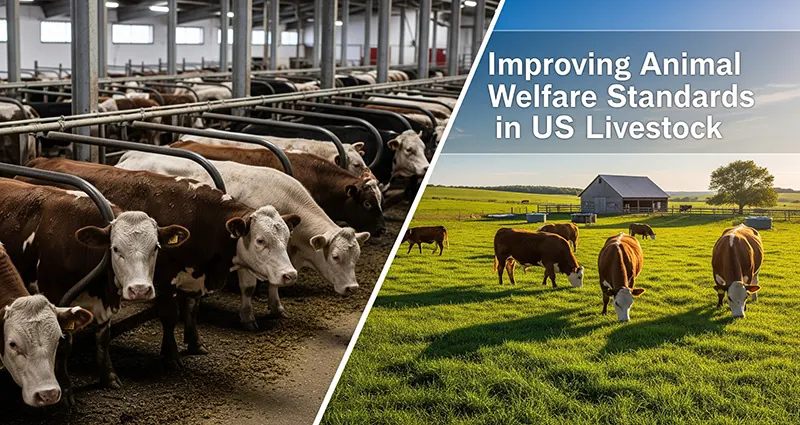Animal welfare has become a critical concern in the modern agricultural landscape of the United States. As consumers increasingly demand ethically produced food and greater transparency in farming practices, improving animal welfare standards in US livestock operations is more important than ever. Enhanced welfare standards not only benefit the animals but also contribute to food safety, environmental sustainability, and the overall quality of meat and dairy products.
The Importance of Animal Welfare in Livestock
Animal welfare pertains to the physical and psychological well-being of animals. For livestock, this means ensuring animals have adequate space, proper nutrition, access to veterinary care, and environments that allow natural behaviors. Good welfare standards help prevent stress, injury, and disease, which can have direct impacts on animal health and product quality.
Current Challenges in US Livestock Welfare
Despite improvements over the years, some challenges persist in US livestock production:
- Confinement Systems: Large-scale industrial farms often use confined spaces such as gestation crates, battery cages, or feedlots that limit animals’ movement.
- Transport and Slaughter Conditions: Stress and injury during transport and at slaughterhouses remain a concern.
- Lack of Uniform Standards: Animal welfare regulations vary by state and livestock type, leading to inconsistent protections.
- Worker Training: Proper handling of animals requires trained personnel to minimize suffering.
Strategies for Improving Animal Welfare Standards
1. Implementing Science-Based Guidelines
Adopting welfare standards grounded in scientific research ensures that livestock management practices promote health and minimize distress. Organizations such as the American Veterinary Medical Association (AVMA) and the Global Animal Partnership (GAP) provide guidelines that can be incorporated into farm protocols.
2. Phasing Out Confinement Practices
Moving away from restrictive confinement systems toward more humane housing—such as free-range or group housing—allows animals to express natural behaviors and reduces stress.
3. Enhancing Transport and Slaughter Practices
Improving handling during transport, limiting travel times, and using low-stress methods at slaughterhouses can significantly reduce animal suffering. Staff training and infrastructure upgrades are vital components of this effort.
4. Certification Programs and Labeling
Certification programs (e.g., Certified Humane, Animal Welfare Approved) audit farms based on welfare criteria. Labeling products with such certifications provides transparency to consumers and incentivizes producers to meet elevated standards.
5. Educational Outreach and Farmer Support
Providing resources, training, and financial incentives to farmers encourages the adoption of welfare-friendly practices. Outreach programs can help disseminate information about new technologies, animal behavior, and best management techniques.
6. Legislative Action
Supporting laws that establish minimum welfare standards for livestock can create a uniform baseline across the industry. State and federal regulations can address issues like confinement, transportation, and humane slaughter.
Benefits of Improved Animal Welfare
- Better Product Quality: Reduced stress leads to healthier animals and superior meat and dairy products.
- Consumer Trust: Transparent and humane practices satisfy growing consumer demands and can open new markets.
- Sustainability: Welfare improvements often coincide with practices that benefit environmental sustainability.
- Ethical Responsibility: Ensuring animals are treated with respect aligns with societal values and ethical farming.
Improving animal welfare standards in US livestock production is a multifaceted challenge requiring collaboration among farmers, industry organizations, legislators, and consumers. By adopting science-based practices, phasing out inhumane confinement, enhancing transport and slaughter protocols, and promoting certification programs, the livestock industry can meet growing demand for ethical and sustainable animal agriculture. These advances not only improve the lives of millions of animals but also foster a more responsible and trusted food system across the United States.












